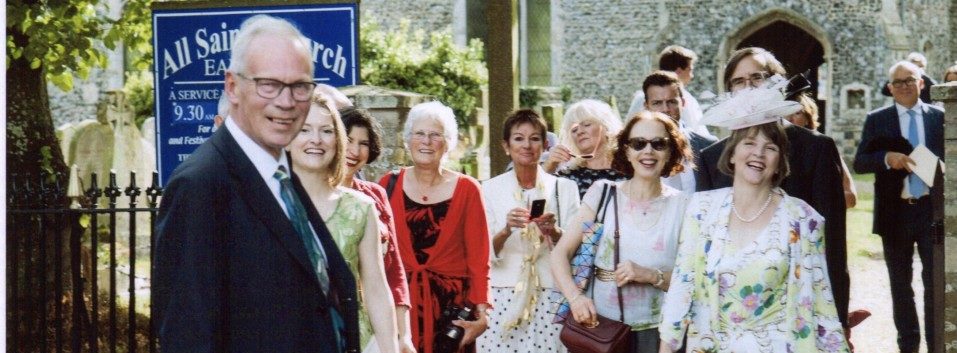I’m not going to remember the titles of all the paintings to show you, but a few will give the flavour. One was Moroni’s The Tailor, another was Bellini’s Doge Leonardo Loredan, there were these two splendid teenaged brothers, painted by Van Dyck, both of whom were killed in the Civil War. This Gainsborough was used as an example of how a more free style gives little clue how the clothes were made (so is less appreciated by clothes historians) and a poignant Hogarth of the Graham children who look so happy and so very expensively dressed. The little boy on the left died before the picture was finished and she showed several touches that Hogarth had done to indicate this sad event. He was less than a year old – at that time, by the way, it was normal for boys to wear pink (as a less strong version of warlike red) and girls to wear blue, which was associated with the Virgin Mary. There was Madame de Pompadour, who also died before the portrait was completed, Queen Charlotte who, anxious and distracted about her husband’s illness, was reluctant to sit for a portrait. She turned up in a dark gown and an unbecoming bonnet that hid her face and it took some persuasion for her to remove the hat. Lawrence simply painted her in a prettier dress, but the king was shocked by her hatless hair and it was rejected. Then there was Ingres’ Madame Moitessier – this took several years to paint because Ingres kept changing his mind as to what she should wear. He abandoned it several times, then returned to it. When finally completed in 1856, this style was bang up to the minute. Renoir also took several years to complete les Parapluies because he was not satisfied with it – an x-ray shows that the woman on the left looking directly at us had originally been dressed similarly to the mother in the bustle, but he changed his style and painted over her, also changing the message of the painting. Instead of being another richly dressed young woman, her bare head and gloveless hands indicate a woman of a lower social class, one who had a job, though she’s well enough dressed to be respectable and reasonably well paid. However, it’s clear that the man offering her his umbrella has designs on her. In painting and costume terms, however, it’s the completely different dress, painted in a different style too, that is most notable and shows Renoir’s abandonment of Impressionism.
The V&A has one of the dresses shown in a portrait in its collection – sadly, I can’t remember the title or artist and I haven’t managed to find it on the National Gallery website. If I can, I’ll add it later.

Well, that was a treat! Years since I’ve been to the V&A.
And the Doge? Must be one of the most graffittied pictures – there used to be a poster(for the gallery, I think) on the tubes and almost always with added whiskers!
I love that portrait of the Doge, I didn’t know people graffiti’d him! I think his outfit is very elegant, for the time.
Thank you Z. That was fascinating. I think the V.&A. is my favourite museum- in England any way. It’s reserve collections are incredibly useful, and the staff always very helpful.
It was a bit whistle-stop, but it took ages to find all the pictures! I could tell you all she said, but maybe you could join Nadfas and look out for her lecture.
The Hogarth story reminds me of Hawaii. Infant mortality was high there as well. So even today, families throw a big party on the child’s first birthday.
Thank you. What an interesting post.
Is Moroni’s Tailor saying “does my bum look big in this”?
BTW, your link for the Ingres is broken, try this:
http://www.nationalgallery.org.uk/paintings/jean-auguste-dominique-ingres-madame-moitessier
So sad, he looked a happy and healthy little boy and his sister was so proud of him. A very poignant painting.
‘Fraid the answer is yes… There has been debate whether it really was a tailor because it was unusual to paint tradesmen, but it has been concluded that it was. Thanks for the corrected link, I must have not copied all of it. I’ve inserted yours now.
Fascinating.